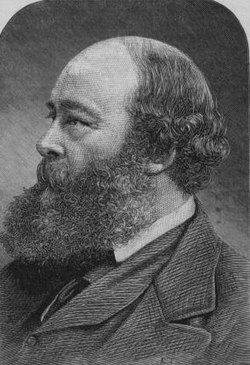Top Qs
Timeline
Chat
Perspective
Unionist government, 1895–1905
Government of the United Kingdom From Wikipedia, the free encyclopedia
Remove ads
Remove ads
A coalition of the Conservative and Liberal Unionist parties took power in the United Kingdom shortly before the 1895 general election. Conservative leader Lord Salisbury was appointed Prime Minister and his nephew, Arthur Balfour, became Leader of the House of Commons, but various major posts went to the Liberal Unionists, most notably the Leader of the House of Lords, the Liberal Unionist Spencer Cavendish, 8th Duke of Devonshire, who was made Lord President, and his colleague in the Commons, Joseph Chamberlain, who became Colonial Secretary. It was this government which would conduct the Second Boer War from 1899–1902, which helped them to win a landslide victory at the 1900 general election.
Balfour led the Government from 1902 before resigning in 1905. The Liberals formed a government thereafter.
The government consisted of three ministries, the first two led by Salisbury (from 1895–1902) and the third by Balfour (from 1902 onwards).
Remove ads
The office of Prime Minister

Lord Salisbury was the second and last person to be head of government while not simultaneously holding the title of First Lord of the Treasury. It was said that there were some attempts to distinguish between the two offices, but in the century or more since, they have remained one and the same.
Trade reform
Balfour succeeded Salisbury as prime minister in 1902. Eventually, the Unionist government would falter after Chamberlain proposed his scheme for tariff reform, whose partial embrace by Balfour led to the resignation of the more orthodox free traders in the Cabinet.
Chinese miners in South Africa
Summarize
Perspective

After the conclusion of the Boer War, the British government sought to rebuild the South African economy which had been devastated by the war. An important part of the rebuilding effort was to get the gold mines of the Witwatersrand, the richest in history and a major cause of the war, back in production as soon as possible. Because the government decreed that white labour was too expensive and black labourers were reluctant to return to the mines,[1] the government decided to import over 60,000 contracted workers from China.[2]
This was deeply unpopular at the time, as popular opinion in much of the Western world, including Britain; was hostile to Chinese immigration. It also happened at a time when poverty and unemployment amongst working-class British people was at very high levels.[3] On 26 March 1904, a demonstration against Chinese immigration to South Africa was held in Hyde Park and was attended by 80,000 people. The Parliamentary Committee of the Trade Union Congress then passed a resolution declaring that:
That this meeting consisting of all classes of citizens of London, emphatically protests against the action of the Government in granting permission to import into South Africa indentured Chinese labour under conditions of slavery, and calls upon them to protect this new colony from the greed of capitalists and the Empire from degradation.
Fall from power
With his majority greatly reduced and defeat in the next election seeming inevitable, Balfour resigned as prime minister in December 1905, leading to the appointment of a minority Liberal government under Sir Henry Campbell-Bannerman. In the general election which followed in 1906, all but three members of Balfour's cabinet lost their seats, including Balfour himself.
Cabinets
Summarize
Perspective
Salisbury ministry
June 1895 to November 1900
November 1900 to July 1902
In November 1900, the Cabinet was reformed for the first time.
Balfour ministry
Changes
- May 1903 – Lord Onslow succeeds Robert William Hanbury at the Board of Agriculture.
- September to October 1903 –
- Lord Londonderry succeeds the Duke of Devonshire as Lord President. Londonderry remains President of the Board of Education.
- Lord Lansdowne succeeds Devonshire as Leader of the House of Lords. Lansdowne remains Foreign Secretary.
- Lord Salisbury succeeds Arthur Balfour as Lord Privy Seal.
- Austen Chamberlain succeeds Charles Ritchie at the Exchequer. Chamberlain's successor as Postmaster General is not in the Cabinet.
- Alfred Lyttelton succeeds Joseph Chamberlain as Colonial Secretary.
- St John Brodrick succeeds Lord George Hamilton as Secretary for India.
- H. O. Arnold-Forster succeeds Brodrick as Secretary for War.
- Andrew Graham-Murray succeeds Lord Balfour of Burleigh as Secretary for Scotland.
- March 1905 –
- Walter Hume Long succeeds George Wyndham as Irish Secretary.
- Gerald Balfour succeeds Long at the Local Government Board.
- Lord Salisbury succeeds Balfour at the Board of Trade. Salisbury remains Lord Privy Seal.
- Lord Cawdor succeeds Lord Selborne at the Admiralty.
- Ailwyn Fellowes succeeds Lord Onslow at the Board of Agriculture.
Remove ads
List of ministers
Summarize
Perspective
Remove ads
Notes
- The position of Prime Minister was not a formal ministerial office.
- Also served as Leader of the House of Lords.
- Halsbury was created the 1st Earl of Halsbury on 19 January 1898.
- Devonshire also served as Leader of the House of Lords from 12 July 1902 to 13 October 1903.
- Lansdowne also served as Leader of the House of Lords from 13 October 1903 to 4 December 1905
- Cranborne succeeded as the 4th Marquess of Salisbury on 22 August 1903.
- Londonderry entered the Cabinet on 7 November 1900.
- Carmarthen succeeded as the 10th Duke of Leeds on 23 December 1895.
Remove ads
References
Wikiwand - on
Seamless Wikipedia browsing. On steroids.
Remove ads




